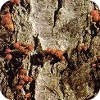Description
Beech bark disease is a disease that causes mortality and defects in beech trees in the eastern United States and Europe. In North America, the disease results when the beech scale insect, Cryptococcus fagisuga, attacks the bark, creating a wound. Later, two different fungi (Neonectria faginata (previously Nectria coccinea var. faginata) and Neonectria ditissima (previously Nectria galligena)) common to North America can invade the tree through the wound, causing acanker to form. In subsequent years, new cankers will continue to form, ultimately leading to the death of the tree. In Europe, N. coccinea is the primary fungus causing the infection. Infection in European trees occurs in the same manner as it does in North American trees. Though the disease still appears in Europe, it is less serious today than it once was.
Text and image from Wikipedia.
Browse this genome on Ensembl Genomes.

